The season of Birak

In the south-west of Western Australia the Noongar people follow a yearly calendar with six seasons: Birak, Bunuru, Djeran, Makuru, Djilba and Kambarang.
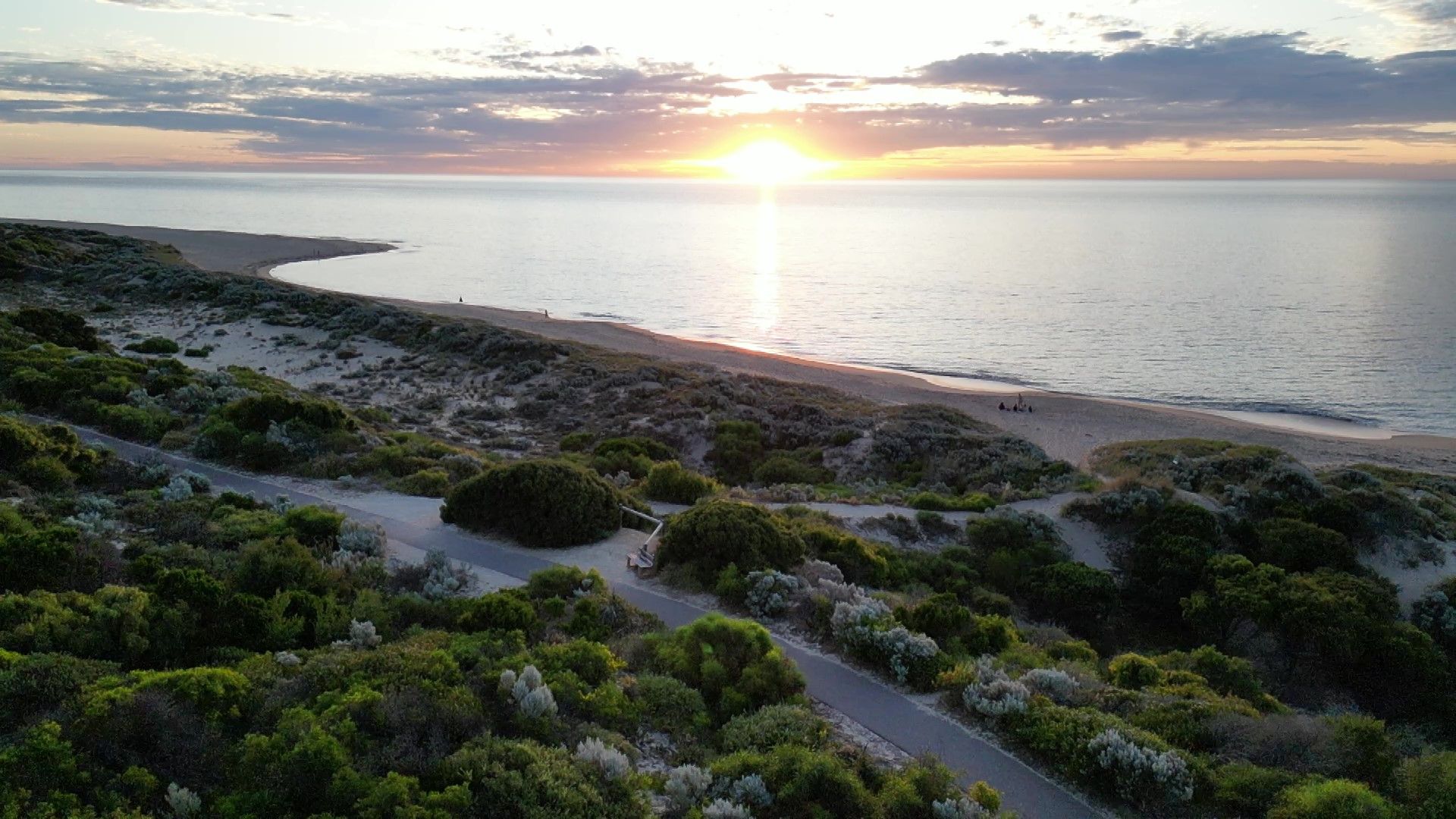
We have just finished the season of Birak (the season of the young). It occurs around December - January rather than following particular dates, since the Noongar seasons vary in length depending on the environmental indicators around us.
Signs of Birak
Birak is known as the first summer (with Bunuru being the second) and typically occurs from December to January. The rain begins to ease, it gets dry and hot and traditionally was time to conduct burns in a mosaic pattern. In the afternoon the cool sea breeze arrives from the southwest, countering the morning easterly.
Once the weather changes, the rest of nature responds. Now the fledgling birds get ready to venture out and reptiles to shed their skin. This is also when tadpoles start approaching adulthood and turning into frogs, as the rainfall drops and temperature increases. In plants, the flowers start turning to seeds and nuts and the leaves change colour. The moodjar (Christmas tree) starts to blossom from yellow (bud form) to orange (full flower).
In my nature journal
Although it feels like a cooler summer this year (La Niña impact?) there definitely has been a shift to warmer weather and the dependable Fremantle Doctor (as the afternoon sea breeze is also known by) is here most days. So far the weather has been quite comfortably warm and pleasant. The salty, fresh smell of the ocean is in the air and the sound of cicadas chirping in the bush. The sun rises early and the dawn chorus wakes me up multiple times before I feel ready to open my eyes.
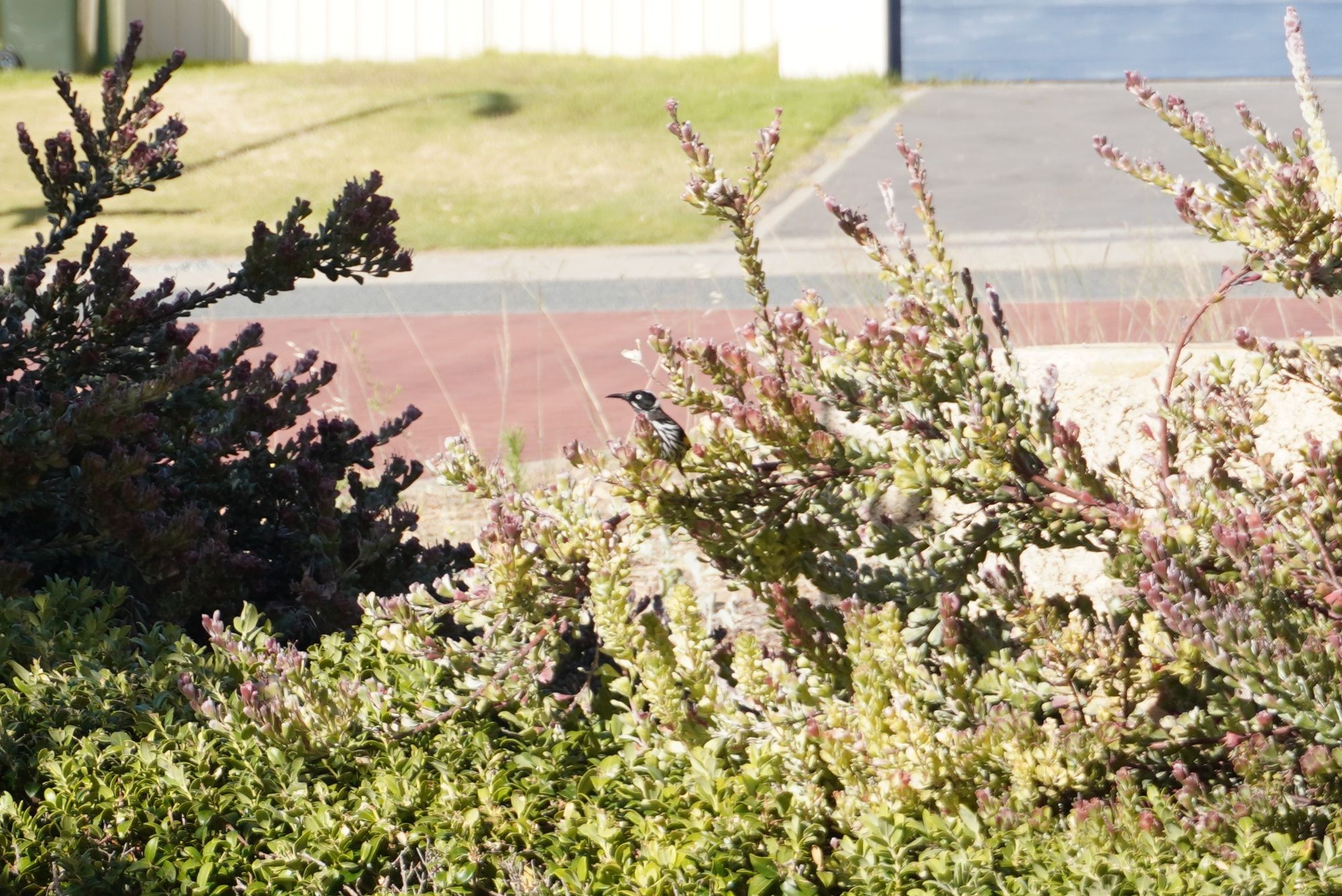
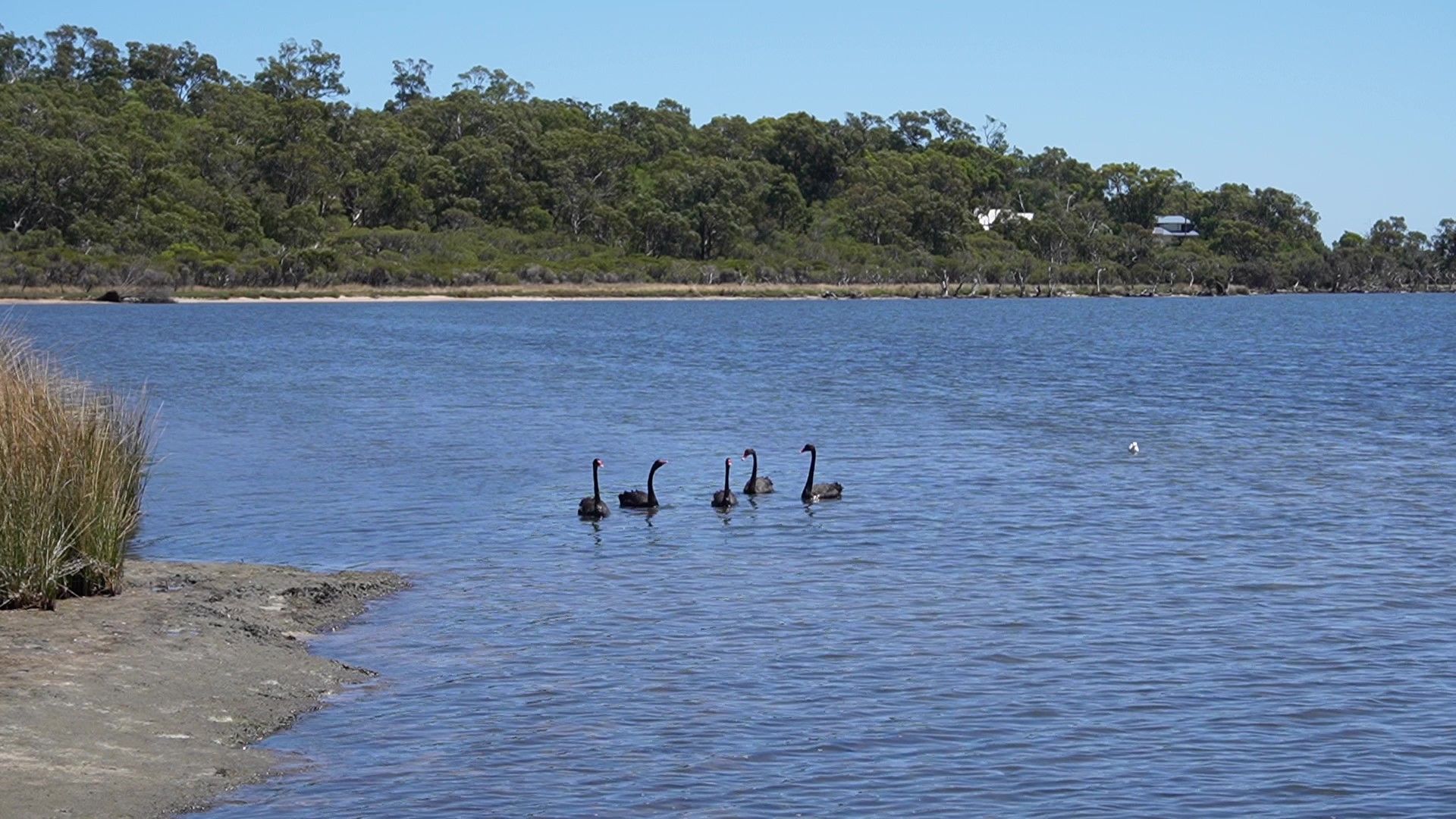
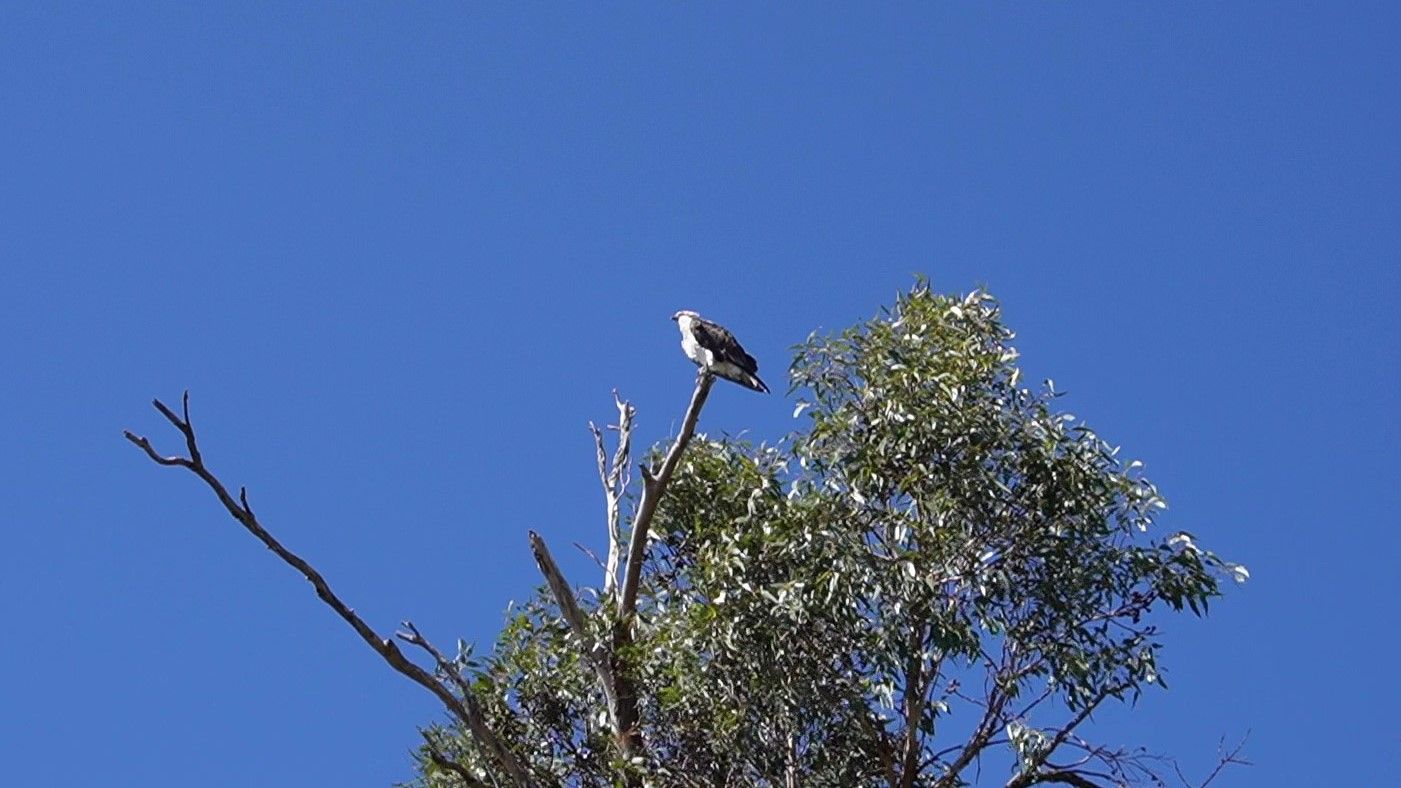
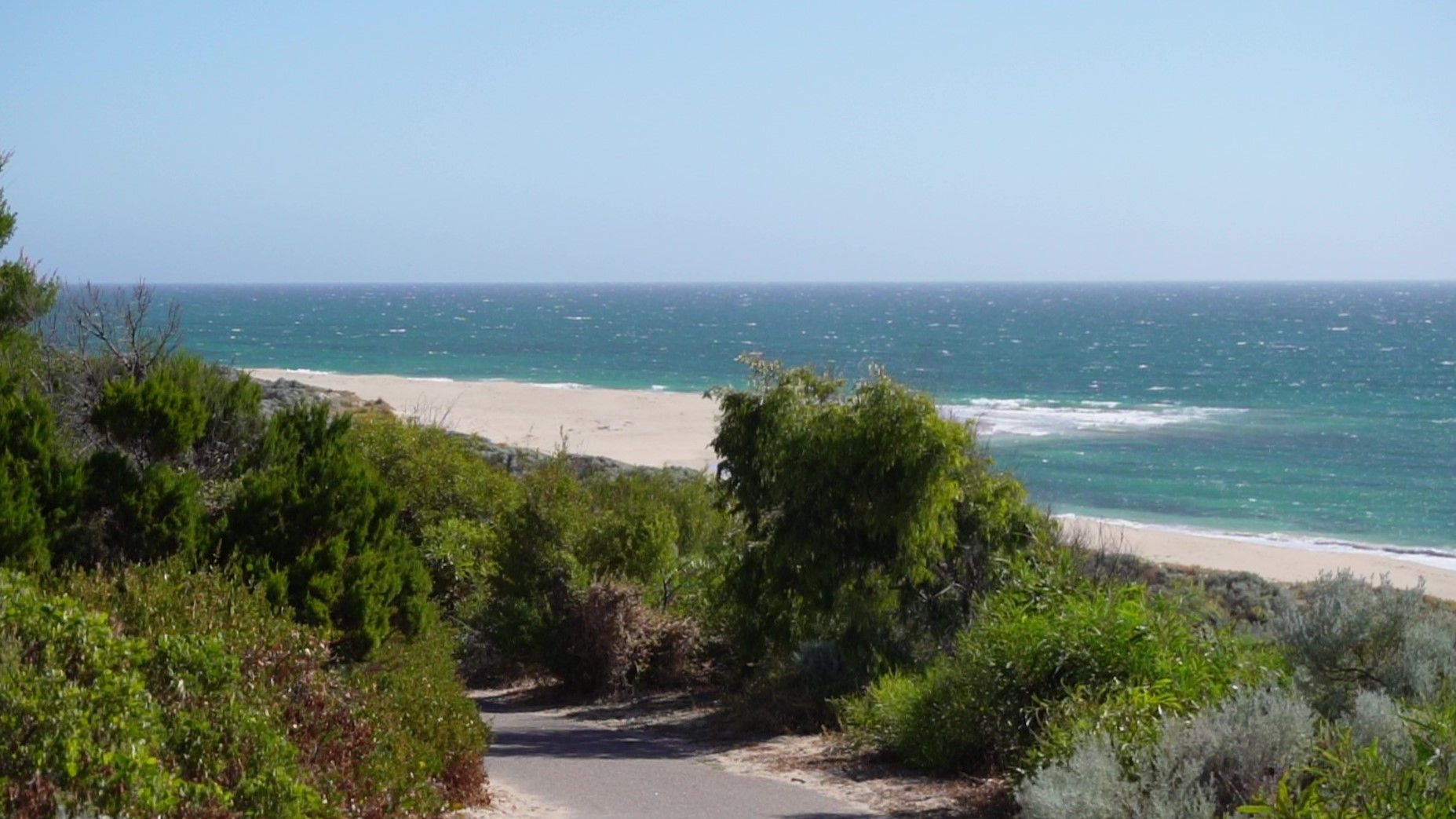

There's a flurry of wings with lots of bird activity in the garden. New Holland honeyeaters and singing honeyeaters fight to take turns drinking nectar from the hedge. One morning I spotted a currawong and its chick in the neighbour's tree, and was shocked by the warm orange colour of the inside of its beak. The rainbow bee-eaters returned this year and loved scouting for insects from a dying wattle tree at the back of the property, intermingling with the welcome swallows and fairy martins darting overhead.
Down by the estuary, a young osprey calls loudly and repetitively for food from its parent, which it diligently provides. Some black swans serenely pass by, their cygnets almost indistinguishable from the adults except for size. Snakes and lizards dart back under the shelter of grass and bushes when they hear my footsteps.
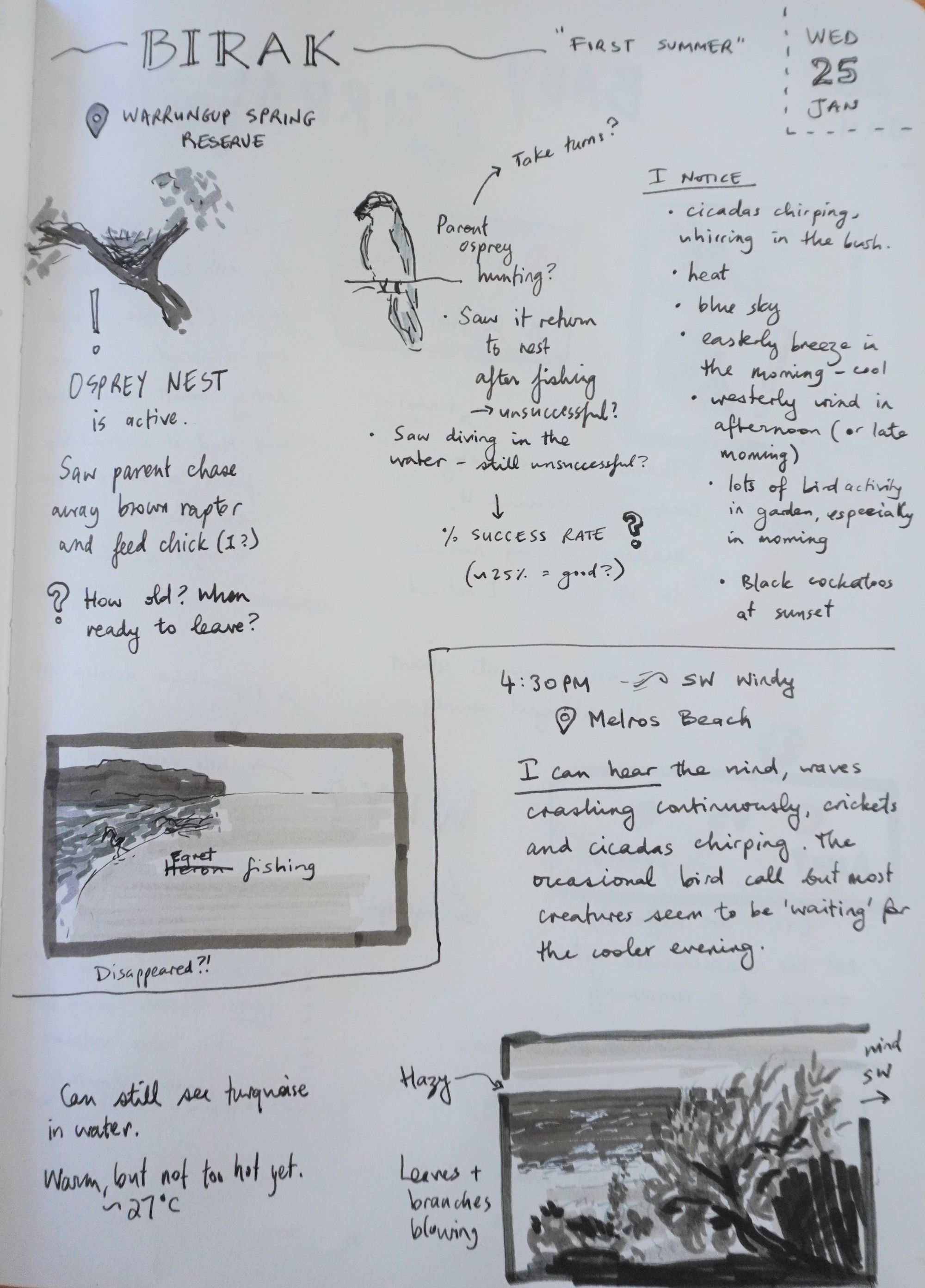
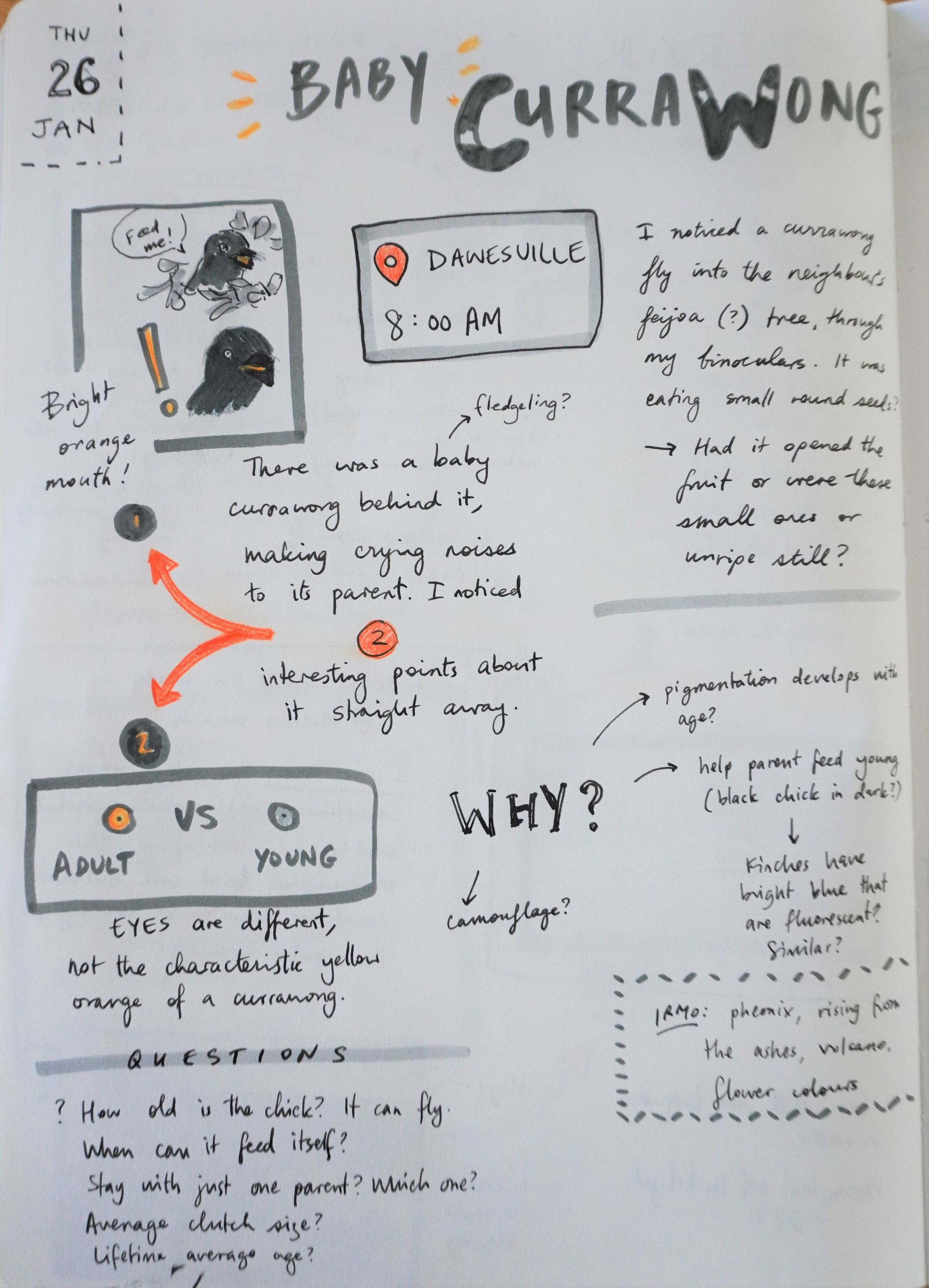
By the beach, the ravens' caws sound out above the cicada's din. There's no sign of kangaroos, they're probably resting under bushes in the shade somewhere more hidden. The welcome sea breeze has helped to cool the nights down and the waves crashing on the shore have a reassuring boom in the distance. At sunset flocks of black cockatoos and regent parrots noisily fly overhead to return to their roosts.
Discussion
What signs from nature do you look out for to know summer is beginning around you?
Try this: Go out at different times of the day and note down what you see, hear, feel and smell around you to identify the characteristic signs of nature this season. What are the animals doing? What stages are the native plants in and do you notice any changes?


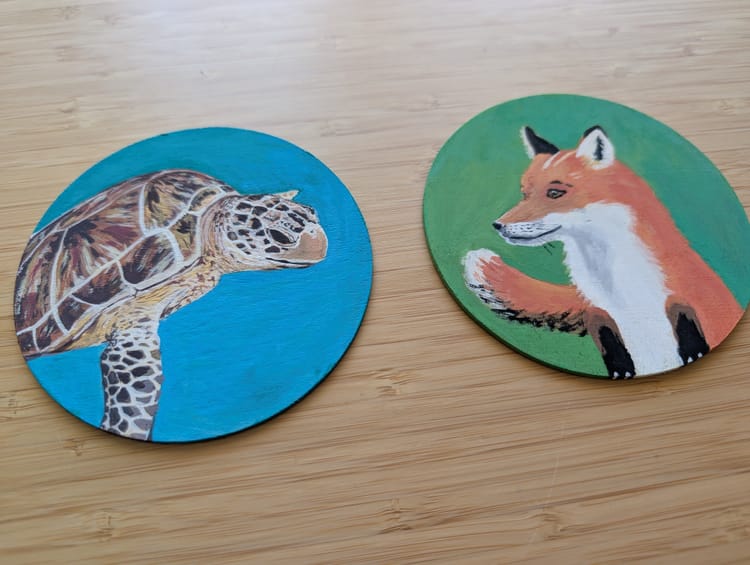

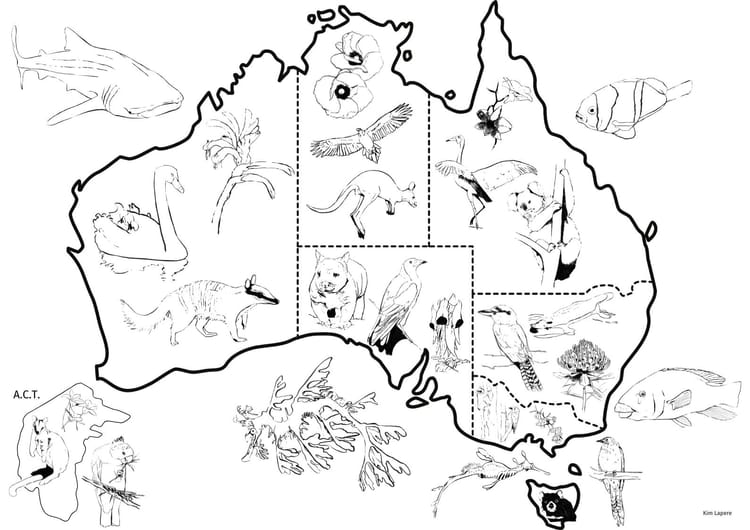
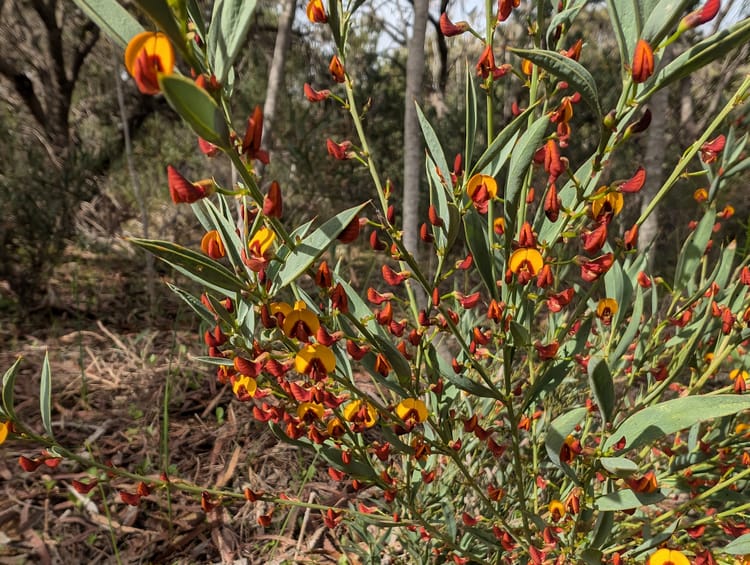
Member discussion